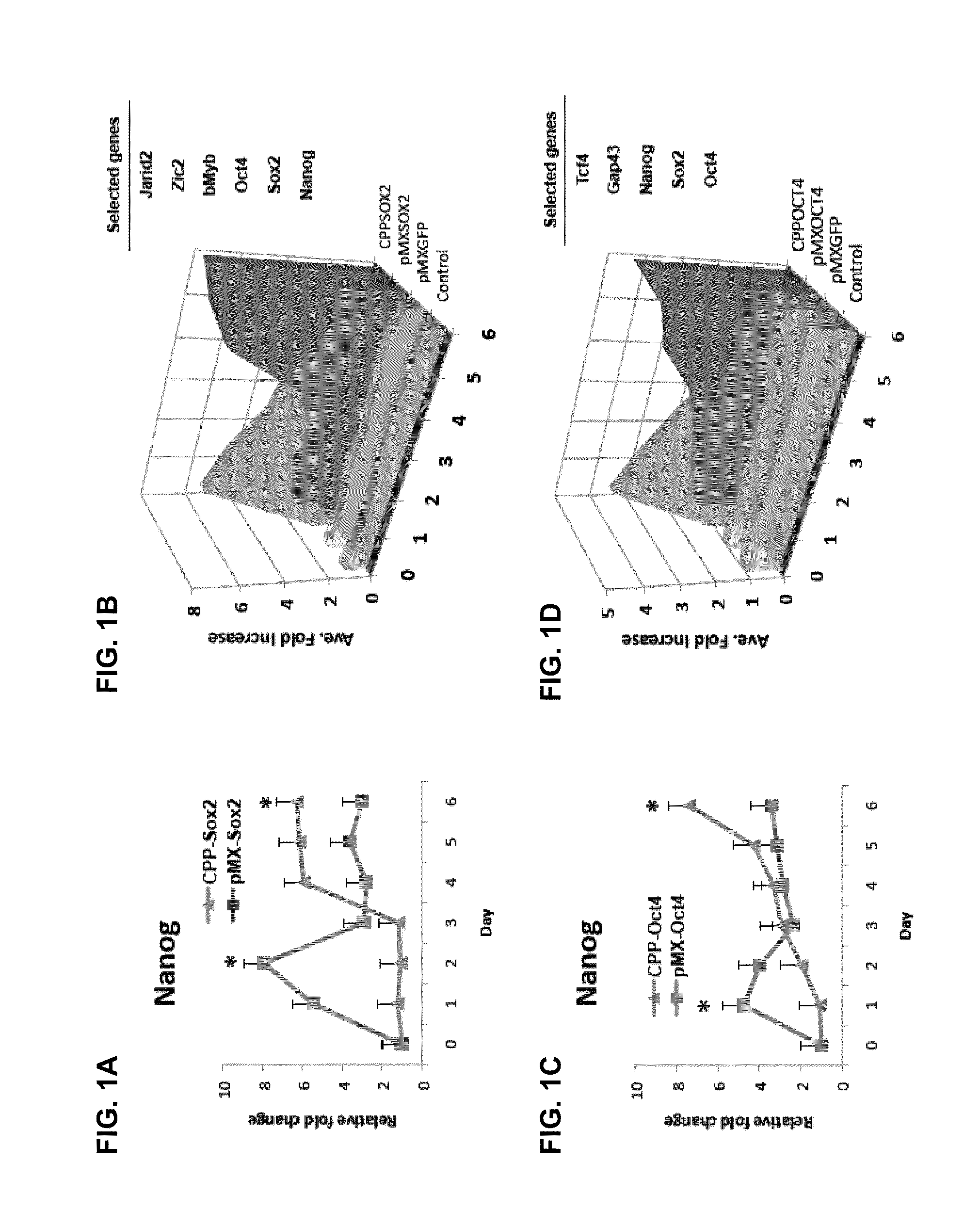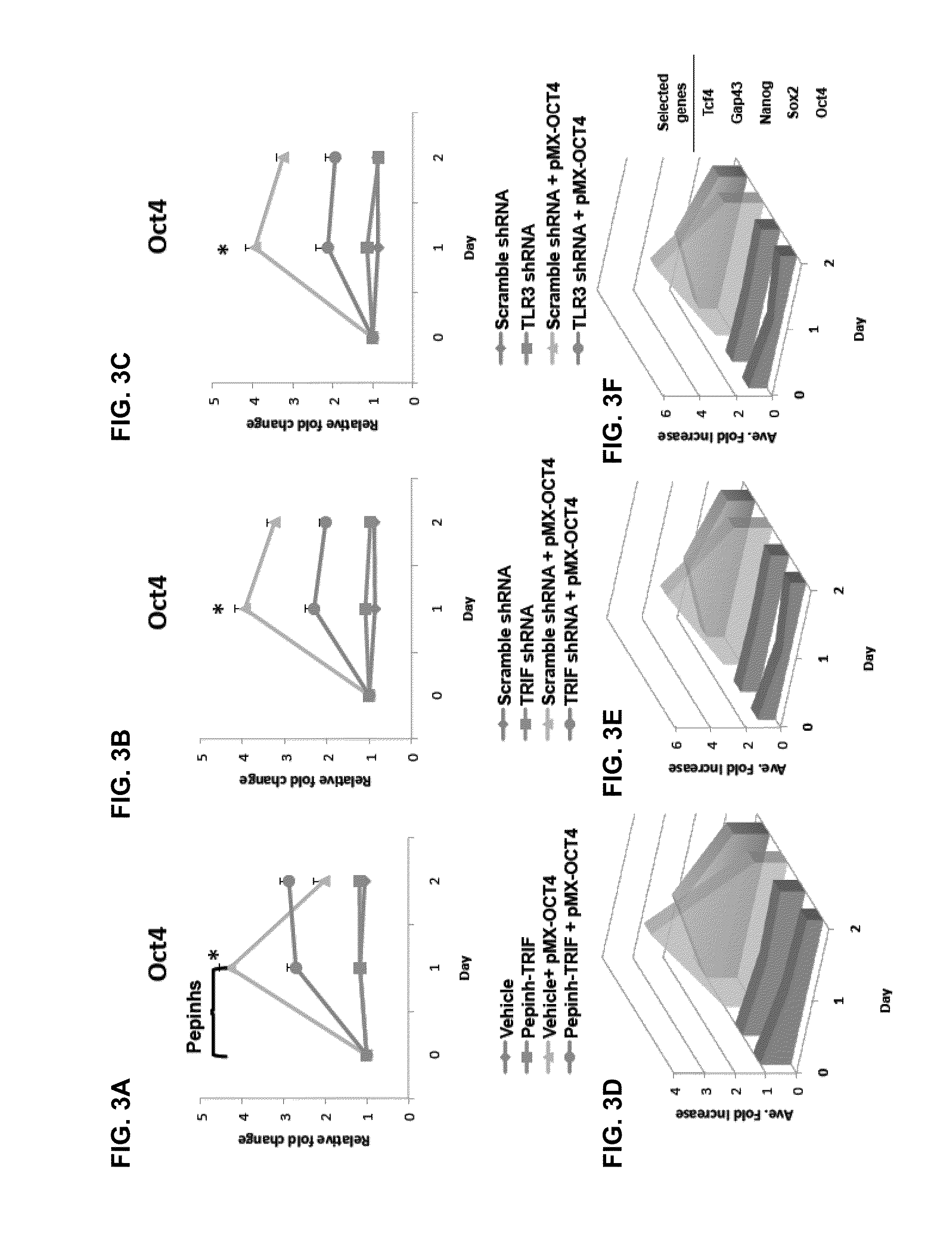Activation of innate immunity for nuclear reprogramming of somatic cells
a technology of innate immunity and nuclear reprogramming, which is applied in the field of activation of innate immunity for nuclear reprogramming of somatic cells, can solve the problems of low reprogramming efficiency, failure to provide precise control of the reprogramming process, and many unknowns about the underlying causes, so as to improve the yield of doxycycline-induced reprogramming, enhance reprogramming, and increase the expression of oct4
- Summary
- Abstract
- Description
- Claims
- Application Information
AI Technical Summary
Benefits of technology
Problems solved by technology
Method used
Image
Examples
example 1
Activation of Innate Immunity in Non-Integrating Nuclear Reprogramming
[0126]Retroviral overexpression of the reprogramming factors (Oct4, Sox2, Klf4, c-Myc) generates induced pluripotential stem cells (iPSCs). However, the integration of foreign DNA could induce genomic dysregulation. One approach to overcoming this limitation is to express the factors as cell-permeant proteins (CPPs). To date this approach has proved difficult, and human somatic cells have not been reprogrammed using purified CPPs. We discovered a striking difference in the pattern of gene expression induced by viral versus protein-based delivery of the reprogramming factors, suggesting that a signaling pathway required for efficient nuclear reprogramming was activated by the retroviral, but not CPP approach. In both gain- and loss-of function studies, we find that activation of toll-like receptor 3 (TLR3) plays a role in the efficiency of nuclear reprogramming. Stimulation of TLR3 causes rapid changes in the expre...
example 2
Direct Reprogramming of Fibroblasts to Functional Endothelial Cells (ECs)
[0173]As disclosed above, it has been demonstrated that ECs can be derived from ESC or iPSCs, and that these pluripotent stem cell-derived ECs can enhance limb perfusion and angiogenesis in murine models of PAD. However, other sources of differentiated cells, such as autologous ECs, are also highly desirable. For clinical applications in particular, it is desirable to develop strategies involving minimal use of genetic manipulation, i.e. non-integrating factors. Innate immunity (for example, via toll-like receptors) pathway plays an important role in nuclear reprogramming and importantly, when activated can cause rapid and global changes in the expression of epigenetic modifiers to enhance chromatin remodeling.
[0174]With the recognition of the role of innate immunity in nuclear reprogramming, and its directed manipulation to favor an open chromatin state, we hypothesized that activation of TLR3, together with e...
PUM
| Property | Measurement | Unit |
|---|---|---|
| concentration | aaaaa | aaaaa |
| concentration | aaaaa | aaaaa |
| concentration | aaaaa | aaaaa |
Abstract
Description
Claims
Application Information
 Login to View More
Login to View More - R&D
- Intellectual Property
- Life Sciences
- Materials
- Tech Scout
- Unparalleled Data Quality
- Higher Quality Content
- 60% Fewer Hallucinations
Browse by: Latest US Patents, China's latest patents, Technical Efficacy Thesaurus, Application Domain, Technology Topic, Popular Technical Reports.
© 2025 PatSnap. All rights reserved.Legal|Privacy policy|Modern Slavery Act Transparency Statement|Sitemap|About US| Contact US: help@patsnap.com



